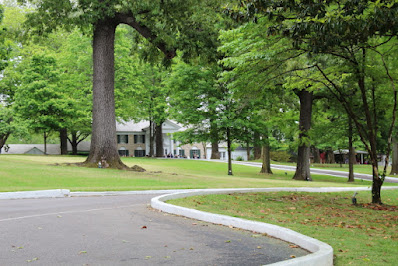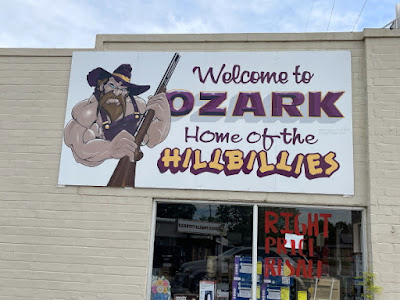William "Bill" Tripp is an American outside artist, poet, writer, painter, welder, and sculptor that lives in Brownville (population 9,788), Tennessee. I was not sure what he meant when he said he was an "outside artist," so I looked it up on the web and found that: "Outside art is art made by self-taught individuals who are untrained and untutored in the traditional arts with typically little or no contact with the conventions of the art worlds."
Bill is primarily known for his metal sculpture The Mindfield, which he started working on in 1989. It is currently the largest sculpture in Tennessee and covers an area the size of a football field. It was reported that structurally, the sculpture is intended to resemble a cathedral or a ship. Upon his death, he has made arrangements with the City of Brownsville to be buried in his sculpture and The Mindfield will be preserved by the Kohler Foundation.
 |
| Picture by Ashley |
 |
| Picture by Ashley |
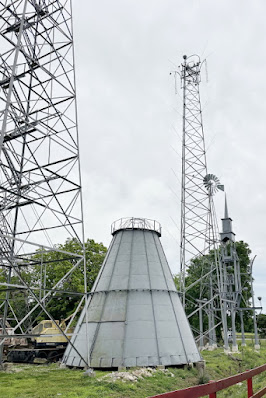 |
| Picture by Ashley |
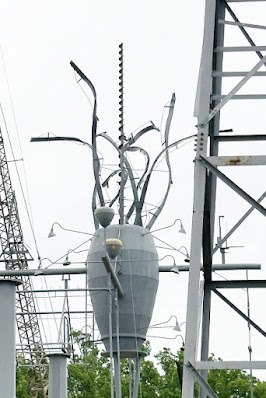 |
| Picture by Ashley |
 |
| Picture by Ashley |
 |
| Picture by Ashley |
 |
| Picture by Ashley |
 |
| Picture by Ashley |
Located adjacent to Interstate 40 in Cordova (population 68,779), Tennessee, is the world's largest set of three crosses. The crosses are 150 feet tall and constructed on the Bellevue Baptist Church grounds, which is the largest church in Southeast United States.
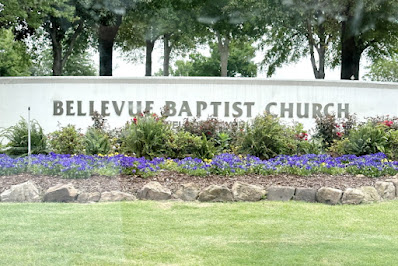 |
| Picture by Ashley |
We drove by Graceland, the home of Elvis Presley in Memphis (population 633,104), Tennessee, but did not have time to stop for a tour because a tour takes most of a day.
While we were taking pictures of the Graceland sign, a tour bus came by and opened the gate, so we were able to take a few pictures of the mansion from the street.
We also drove over to the Circle G Ranch that Elvis owned just across the state line in Mississippi. The last time I visited the ranch we were told that it was going to be restored to what it looked like when Elvis and Priscilla lived there, but no improvements have been made since my previous visit. The ranch is only about 15 minutes from Graceland.
 |
| Picture by Ashley |
 |
| Web Picture - Photographer Unknown |
 |
| Picture by Ashley |
Memphis is located adjacent to the east side of the Mississippi River, so when we crossed the bridge we were in Arkansas.
We stopped at the Southland Hotel/Casino in hopes of finding a food court, but they did not have one; so we continued our journey into West Memphis where we found several fast food restaurants.
 |
| Picture by Ashley |
 |
| Picture by Ashley |
 |
| Picture by Ashley |
The Old Mill in North Little Rock (population 64,591), Arkansas, is a replica of an abandoned water-powered grist mill; but some mill parts use in the reconstruction are from an original mill. On the first level, the grist mill grinding parts are authentic and date back to 1828. The mill is featured in the opening scenes of the classic movie Gone With The Wind.
 |
| Picture by Ashley |
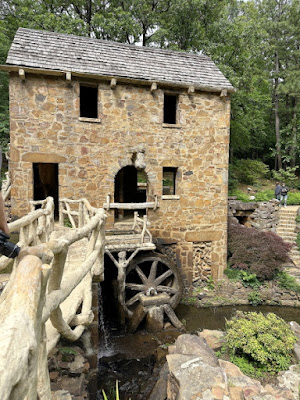 |
| Picture by Ashley |
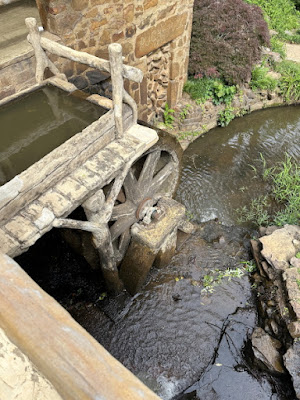 |
| Picture by Ashley |
 |
| Picture by Ashley |
 |
| Picture by Ashley |
 |
| Picture by Ashley |
One of our tour books recommended that we stop at an "Overlook Rest Area" to take pictures, but we could not figure out what scenic views we were supposed to take pictures of. Maybe we were there at the wrong time of year, or the foliage has grown taller since the book was written.
Franklin County, Arkansas, is somewhat unique in that the county has two county seats - Ozark (population 3,542) and Charleston (population 2,588). The county was created in 1837; but the Arkansas River ran through the center of the county, causing an access hardship for people that lived on the south side of the river. Therefore, the county created two county seats - Ozark on the north side of the river and Charleston on the south side of the river.
The Ozark train depot has been converted into a museum and was reported to have some unique exhibits; but, unfortunately, it was closed when we stopped. A short distance away is the old county jail that is now listed for sale. It looks like a medieval castle, except there is no mote and the building has glass windows.
Throughout the city there are a number of cut stone buildings that also have medieval castle features, including the Methodist Church.
Alma (population 5,825), Arkansas, is the "Spinach Capital of the World;" so it is only reasonable that this is where Popeye calls home. At the height of spinach production in 1987, more than half of all spinach canned in the United States was canned in Alma, which was about 60 million pounds annually.
Popeye's Garden is a nice park with Popeye standing on a fountain holding a can of spinach. Some nice murals are also painted on the adjacent building walls.
 |
| Picture by Ashley |
We crossed into Oklahoma and then just a short time later we were treated to a beautiful sunset.
 |
| Picture by Ashley |




































